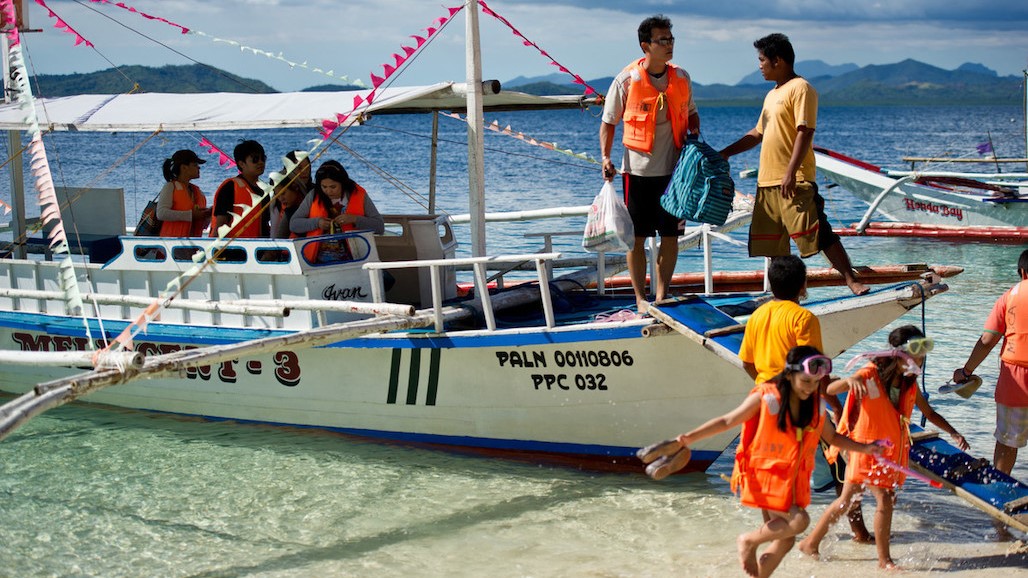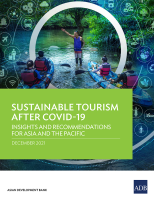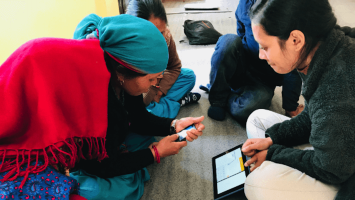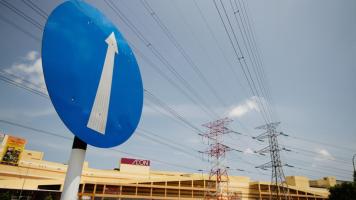
Sustainable travel aligns with BIMP-EAGA’s goal to promote the subregion as a premier destination for ecotourism in Asia and the Pacific. Photo credit: ADB.
Sustainable options for travelers wanting to explore BIMP-EAGA are just a click away.
A growing number of people do not just want to live sustainably, but they also want to be as conscientious when they travel.
Take booking.com's Sustainable Travel Report, which finds that 83% of global travelers think sustainable travel is vital, with 61% saying the pandemic has made them want to travel more sustainably in the future. The report is based on the poll of more than 29,000 travelers across 30 countries.
The report says three out of four accommodation providers say they have implemented at least some kind of sustainability practices at their property, but only a third communicate their efforts proactively to potential guests
Sustainable travel aligns with BIMP-EAGA’s goal to promote the subregion as a premier destination for ecotourism in Asia and the Pacific. Like other countries, BIMP-EAGA members want to revive travel after the sector stalled in 2020 due to the coronavirus disease (COVID-19) pandemic, which resulted in the subregion’s arrivals plunging 76% and tourism receipts shrinking 79.1% to $6.2 billion.
Given the lessons from the pandemic, a new Asian Development Bank report says countries in the Asia and the Pacific “should not seek to recapture the tourism of the pre-pandemic era but rather ‘build forward better.’ This means creating a new kind of tourism that is more closely aligned with the Sustainable Development Goals.”
Sustainable travel vs ecotourism
But what exactly is the difference between sustainable travel and ecotourism?
The United Nations World Tourism Organization defines sustainable travel as “tourism that takes full account of its current and future economic, social, and environmental impacts, addressing the needs of visitors, the industry, the environment, and host communities.”
Meanwhile, the Asian Ecotourism Network defines ecotourism as “responsible travel to natural areas that conserve the environment, sustains the well-being of the local people, and creates knowledge and understanding through interpretation and education of all involved: visitors, staff, and the visited.”
Either way, BIMP-EAGA offers both options.
Green accommodations
In practical terms, traveling sustainably can mean staying at a hotel that have sustainability practices in place, like waste recycling and energy and water saving measures. A number of hotels have also started to phase out single-use plastic in their amenities.
Booking.com is one of the few hotel search sites that helps travelers find sustainable properties. The site recognizes these green hotels by giving them virtual travel sustainable badges, indicating the hotels meet a set of sustainability benchmarks when it comes to reducing waste and plastic use, saving energy, respecting wildlife, reducing water use, and supporting the local community.
A search for green accommodations in Sabah at booking.com yielded 22 options, with Hyatt Regency Kinabalu and Shangri-La Rasa Ria, both part of international chains, among the top picks.
A similar search in Kalimantan in Indonesia yielded 17 properties, with Fave hotel Ketapang, Hotel Neo Palma Palangkaraya by ASTON, and ASTON Tanjung City Hotel, among the top picks.
A search in El Nido, Palawan yielded 10 properties, including Casa Kalaw, Mananquil Travel Lodge, and Huni Lio among the top picks. A search for sustainable properties in Davao in Mindanao yielded five properties, including Waterfront Insular Hotel Davao, Blue Lotus Hotel, and Davao Hub Bed and Breakfast.
The sustainable option field did not appear on the Brunei Darussalam search, but clicking the field for properties that take health and safety measures yielded 11 properties.
Ecotourism attractions
BIMP-EAGA is a top ecotourism destination in Southeast Asia. About 22 million hectares of rain forests, known as the Heart of Borneo, make up about a third of the island. The Sulu–Sulawesi Seas is a highly biodiverse region of the Coral Triangle—the center of the world’s highest concentration of marine biodiversity.
The subregion supports the development of community-based tourism, where residents are actively involved in managing tourism attractions to ensure the sites’ sustainability.
In Lake Sebu, South Cotabato, Mindanao, travelers may consider visiting the Allah Valley Protected Landscape, which hosts critical watersheds and rich biodiversity. Allah Valley is famous for its seven waterfalls, which are popular among tourists, and is the ancestral domain of the T’boli and Ubo tribes.
In 2016, the Philippine government established a community-based agri-ecotourism project in Allah Valley to give the local community a source of livelihood which is sustainable and does not pose a threat to the protected area’s ecosystem. Tourists, meanwhile, could also get a glimpse of the T’boli culture as the project featured a T'boli house with museum, as well as a river pool and park, and a butterfly garden, among others.
Raja Ampat in West Papua, Indonesia is another ecotourism destination in BIMP-EAGA. Raja Ampat is part of the Bird’s Head Seascape, considered the epicenter of marine biodiversity in the world, with a marine ecosystem that provides a source of livelihood to more than 40,000 people in 135 villages.
Raja Ampat offers beautiful sceneries both in land and sea, with its dense jungles, clear blue waters, rich marine life, and the warm hospitality of the Papuan people. Because of its many attractions, starting in 2015 Raja Ampat became a popular tourist destination as resort occupancy multiplied 14 times and homestays 75 times. There was also an increase in the hiring of local guides.
To preserve Raja Ampat’s marine ecosystem and tourism assets, there is a well-established mechanism in place, which includes a code of conduct for tourists and a local community that is proactively involved in protecting the environment. Tourist dollars are funneled back into managing and protecting Raja Ampat’s ecosystem, to make tourism sustainable.
This article was first published by BIMP-EAGA on 11 February 2022.

BIMP-EAGA
The Brunei Darussalam–Indonesia–Malaysia–Philippines East ASEAN Growth Area, or BIMP-EAGA, is a cooperation initiative established in 1994 to spur development in remote and less developed areas in the four participating Southeast Asian countries.


